Three landmine explosions before some people are even awake. It’s not unusual for a small Armenian village on the border of Azerbaijan. The peaceful river and tall, luscious trees that surround the village of Nerkin Hand in Armenia’s southern Syunik province don’t reflect the threats that have become normal in this village.
Armenia and Azerbaijan have been involved in a decades-long conflict over Nagorno-Karabakh (Artsakh), a self-governed region inhabited by ethnic Armenians until 2023 when Azerbaijan attacked after a nine-month blockade and ethnically cleansed it of over 100,000 Armenians. Although it seemed the bloody conflict had ended, tensions along the border persist. Since 2020, Azerbaijan has occupied 200 square kilometers of Armenia’s sovereign territory through periodic short-term fire. Despite ongoing peace negotiations, Azerbaijani soldiers remain in Armenian territories, Armenian prisoners of war from the Artsakh conflict are still held in Baku, and Azerbaijan continues to set multiple demands and preconditions before agreeing to sign a peace treaty.
The Azerbaijani landmines planted in the paths of Nerkin Hand are less than one kilometer away from where Hasmik – a resident of the village – and her family live. Her family is the largest household in the village. Made up of six people, she lives with her husband Rafik, their son, daughter-in-law and two grandsons who make up half of the four-person student body at the village school.
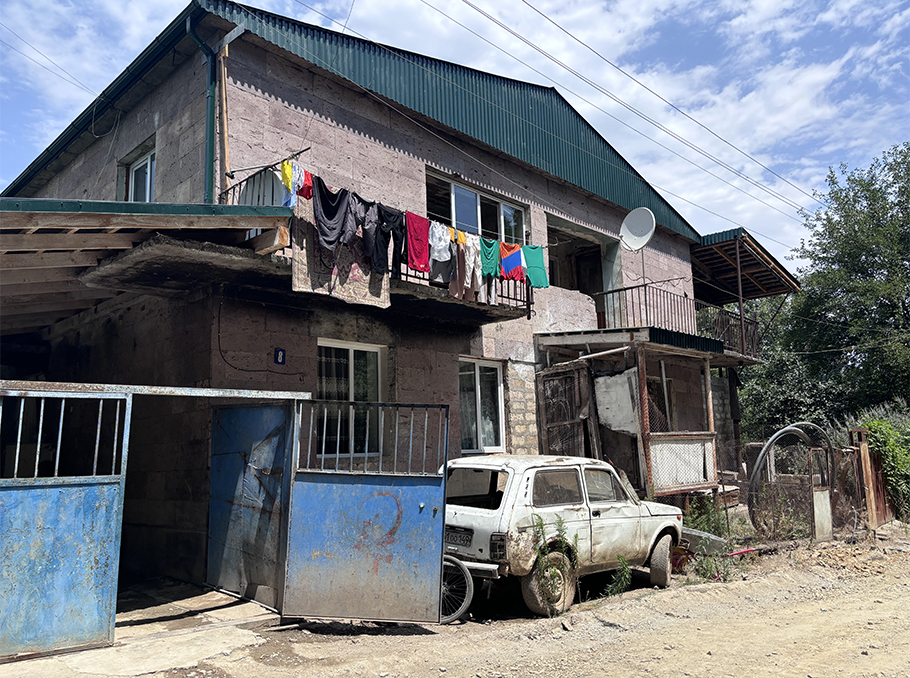
Photo: Charlotte Snoonian/Mediamax
As of the latest available data from the Statistical Committee of the Republic of Armenia from 2024, the total population of Nerkin Hand is 82. Life in the village is plagued by daily security risks due to Azerbaijani military operations, and the village experiences frequent shootings from an Azerbaijani military post set on top of a nearby mountain. A recent shooting on June 20 damaged a neighbor’s roof, and from the school, the Azerbaijani post where the shots come from is so close that it’s clearly visible through the trees.
Azerbaijani military position is a clear issue. Hasmik says there is another post set just above the cemetery where her son, who died when he was seven, is buried. The cemetery is within Armenian borders, and Azerbaijani troops have advanced so that they are strategically located right above it. She hasn’t been able to visit his grave for three years now.
The village isn’t at risk only due to Azerbaijani violence. Rafik says the lack of attention from the government puts the village’s security at risk even more, and the youth tend to leave the village when they grow up.
“The youth go either to Kapan or to Yerevan. They don’t stay here. I’ve counted: if things continue this way, there will be no one left in the village in five years,” says Rafik.
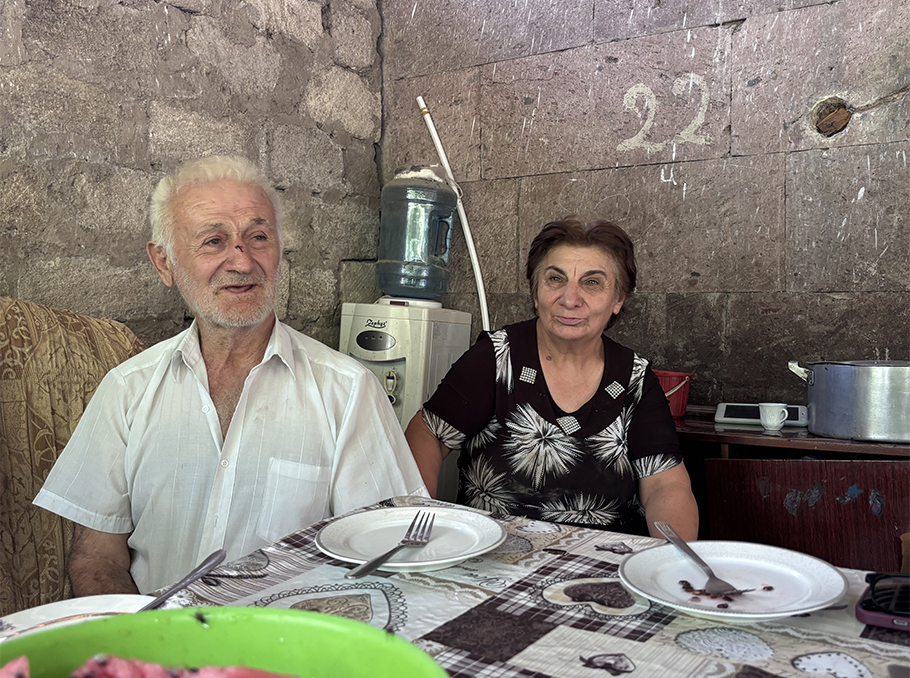
Photo: Charlotte Snoonian/Mediamax
Even Hasmik and Rafik’s 12-year-old grandson Rafael says he will probably leave the village for the nearby city of Kapan when he’s older, and no one is moving to the village either. Kapan itself shares a direct border with Azerbaijan. While passing by Syunik Airport located on the eastern edge of the city, the Azerbaijani flag can be clearly seen.
Both the rural and urban populations of the Syunik province have been declining for years. According to the Statistical Committee of the Republic of Armenia, the population of Syunik in 2020 was just over 137,000 people. Between 2022 and 2023, the population dropped by over 20,000. As of early 2025, the total population was recorded at just under 117,000 people, which is around 3.9% of the Armenian population.
Hasmik and her family have lived in their current home since 1985, just before the Soviet Union ended. They moved from the old settlement of the village, an area which was occupied in 2022 by Azerbaijani soldiers, but they didn’t know at the time why they were being told to move by the state. Reflecting on that time, Hasmik says she believes the state knew the border would become an issue when the Soviet Union no longer existed.
“When I came here as a bride in 1979, these houses were already being built. Later, people were moved from the old settlement into them. Apparently, the Soviet government thought the border might pass through this area,” she says.
After Azerbaijani soldiers took control of part of the village, the family lost access to their five-hectare orchard — and they are not the only ones in this situation. According to the Tatoyan Center for Law and Justice, Nerkin Hand is isolated on three sides by 25 unlawful Azerbaijani military positions, and 15 of those are inside the village.
“Overall, 2,700 hectares of village land are under Azerbaijani occupation, including 2,400 hectares of specially protected areas, 2,170 hectares of forest land, and 130 hectares of communal land. In addition to 2,700 hectares, more than 1,000 hectares of land is in the danger zone, where it is either impossible to carry out any agricultural or other work, or these works have become significantly more difficult due to real dangers to life,” according to the report from March 2024.
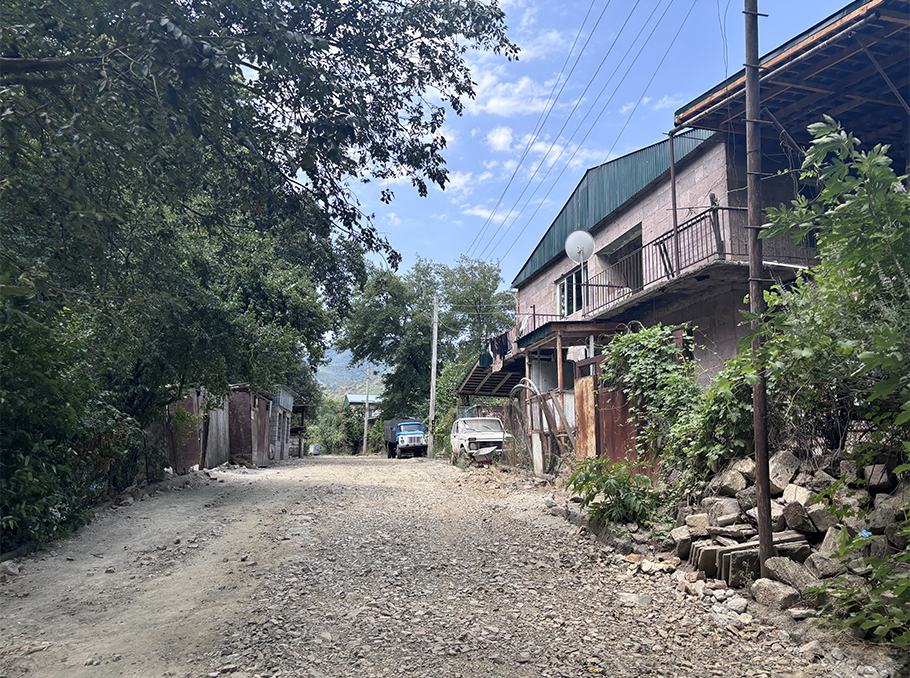
Photo: Charlotte Snoonian/Mediamax
Today, Azerbaijani military positions threaten small villages like Nerkin Hand. Because people live in these border communities, any military actions from either side directly affect life here. However, Azerbaijani populations live nowhere near the border, so their military has nobody they need to protect there. Rafik says the closest Azerbaijani population is about 300 kilometers from the border, so their troops are able to shoot at Armenian populations with low risk.
“It’s not a fear. It could be a moment of fear when they advance, when we know they’re close. But there’s no fear in general,” he says.
Frustration is what Hasmik and Rafik feel instead. Hasmik says Armenian Prime Minister Nikol Pashinyan is to blame for giving away land, citing how Azerbaijan has advanced through the border and occupied land mainly in the Syunik region. According to Armenian state data, after the 2020 war, Azerbaijan occupied 200 square kilometers of the sovereign territory of the Republic of Armenia in Syunik, Vayots Dzor and Gegharkunik Provinces.
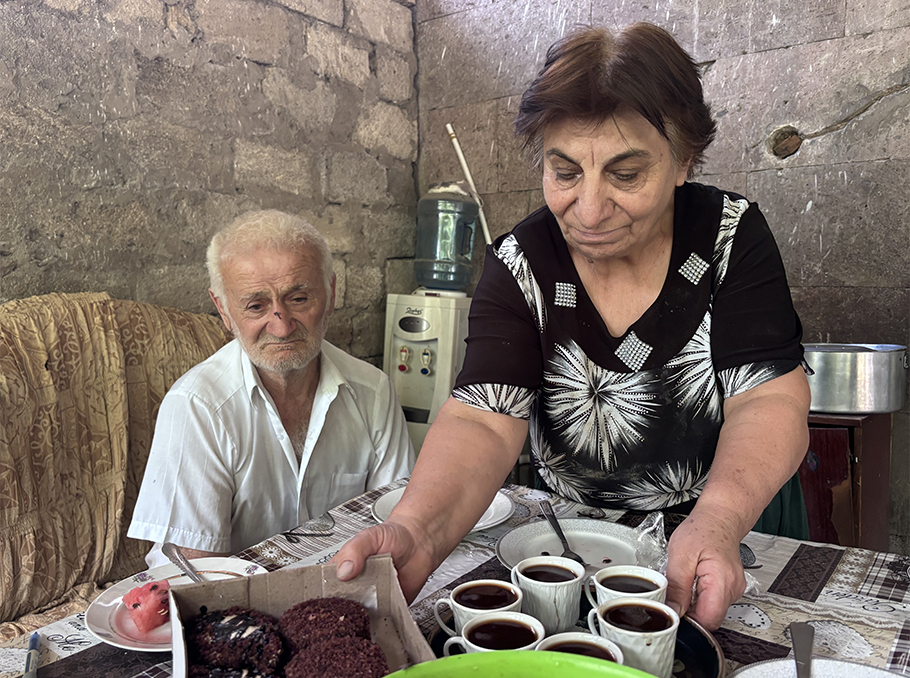
Photo: Charlotte Snoonian/Mediamax
“I don’t like politics but I like truth,” she says. “We were born here and we’re going to stay here. We don’t need any false and fake promises. When he [Pashinyan - editor] says, 'We didn’t give away the land,' I feel ashamed for him.”
Hasmik recalls when Pashinyan visited Nerkin Hand recently for only one hour before leaving, and the brief visit frustrated her even more.
“It felt like he was escaping the people, but if they really want to see how we live, they should come here early in the morning and try to live like we live in this village to understand what we’re going through,” she says.
Hasmik says the most difficult thing about living in the village is security. She works at the nearby military base and most people in the village have employment, but without the government understanding the concerns of these border communities, the security will never change.
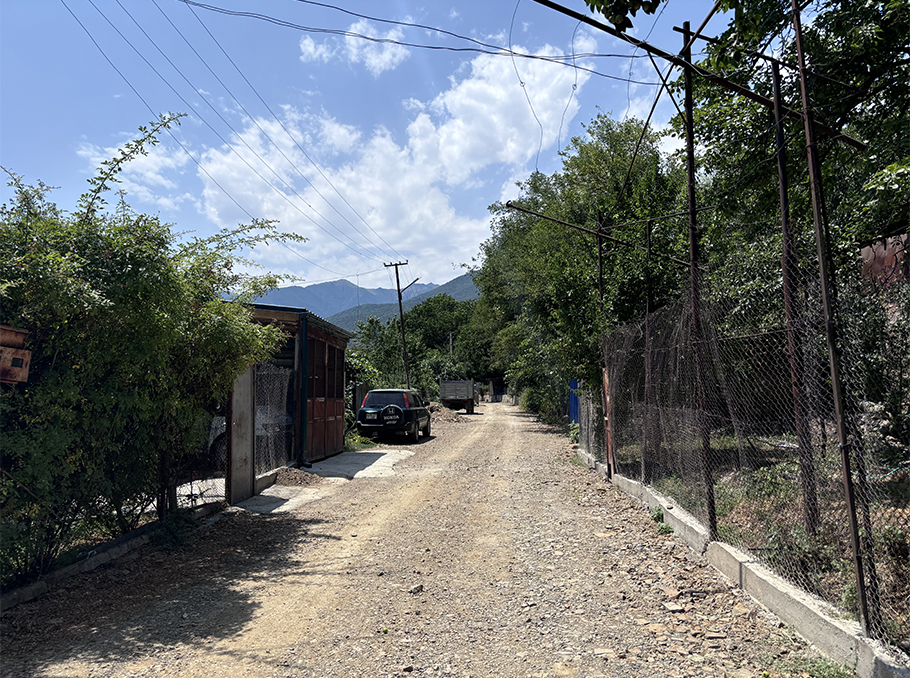
Photo: Charlotte Snoonian/Mediamax
Before the first Nagorno-Karabakh war in the nineties, which Rafik fought in, he says Armenians had good relations with Azerbaijanis. He says they lived only two kilometers from Azerbaijani settlements, and a lot of trade used to happen. Azerbaijani petrol was cheap and good quality, and the proximity meant it was easy to buy it from them. Rafik used to sell butter to them as well, and he could tell that Azerbaijanis liked Armenians.
“When I would go to their homes, I could see that they were sincerely happy to receive Armenians to their homes,” he says. “They were saying you are good people.’”
Now, Rafik says he is hopeful the new generation can live in peace again one day. He says the younger generation doesn’t need the same hostility that’s been going on for decades, and he hopes that trade and communication can restart between Armenians and Azerbaijanis.
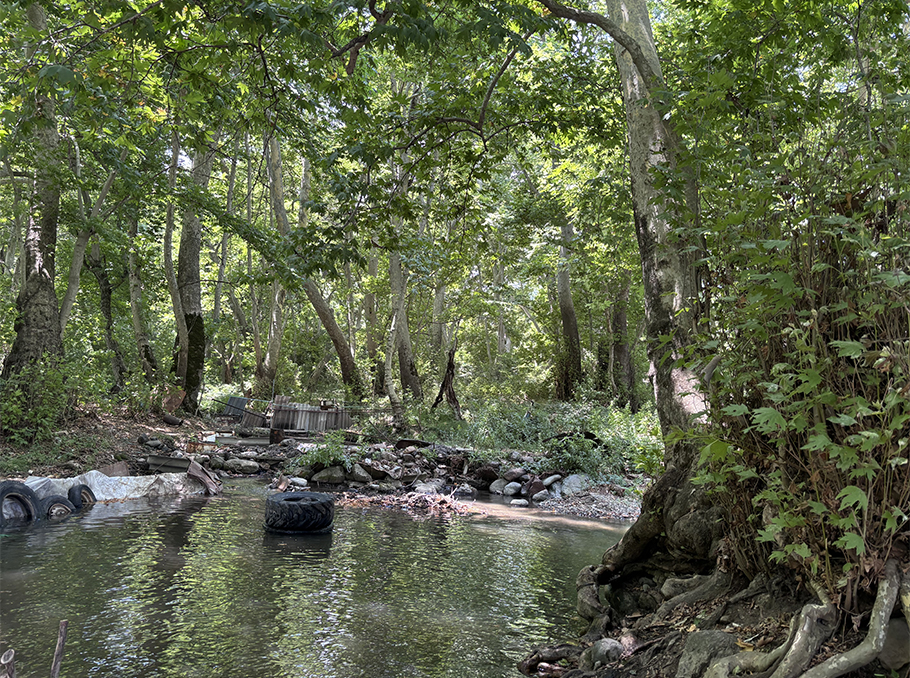
Photo: Charlotte Snoonian/Mediamax
Despite daily security concerns, the family goes about life as normal. Since Rafael is on school vacation, he walks down to the nearby river for a cool swim on a hot summer day, excited to enjoy his time in nature – his favorite part about the village.
In between sharing stories about school, Rafael points to a path that he says they can’t go down anymore. It’s where he and his father used to go to get wood and greens, but one day when they went, Azerbaijanis threw stones at them. It’s the path where the landmines are now.
The walk to the river is quick, so Rafael’s stories are soon halted by his desire to jump off the bank into the refreshing water.
“This is the best village,” he says.
By Charlotte Snoonian
Charlotte Snoonian is an Armenian-American student from Boston. She has arrived in Armenia through the initiative of The Armenian Project (TAP) created by the Hovnanyan Foundation and is working as an intern at Mediamax media company.








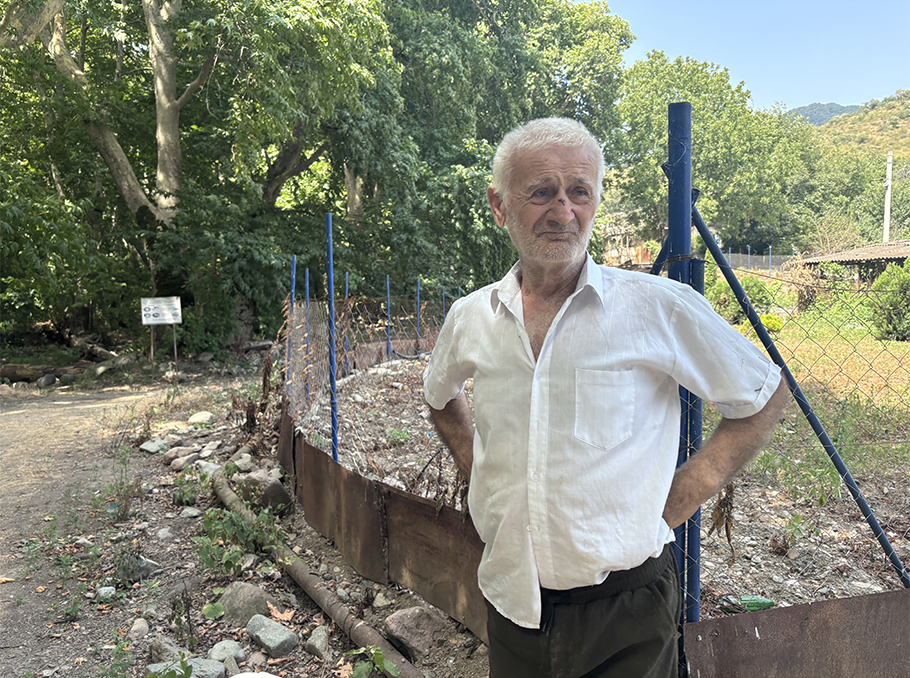

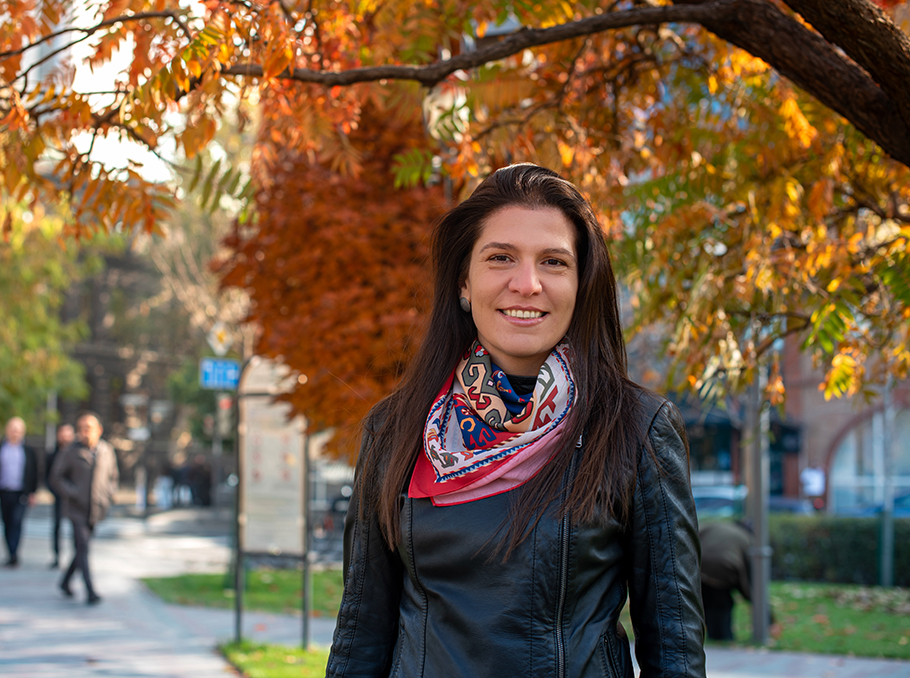
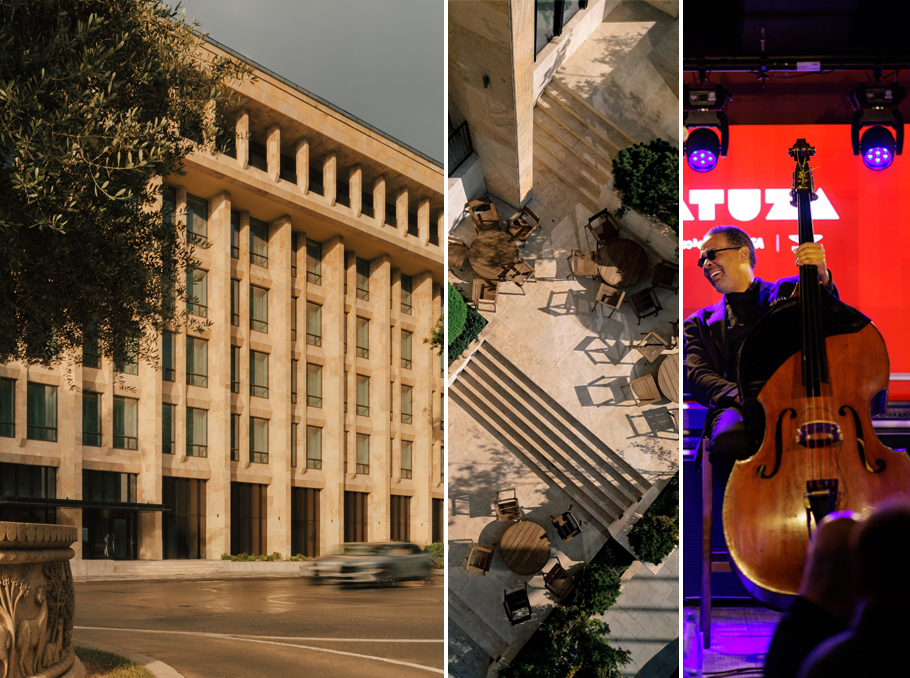

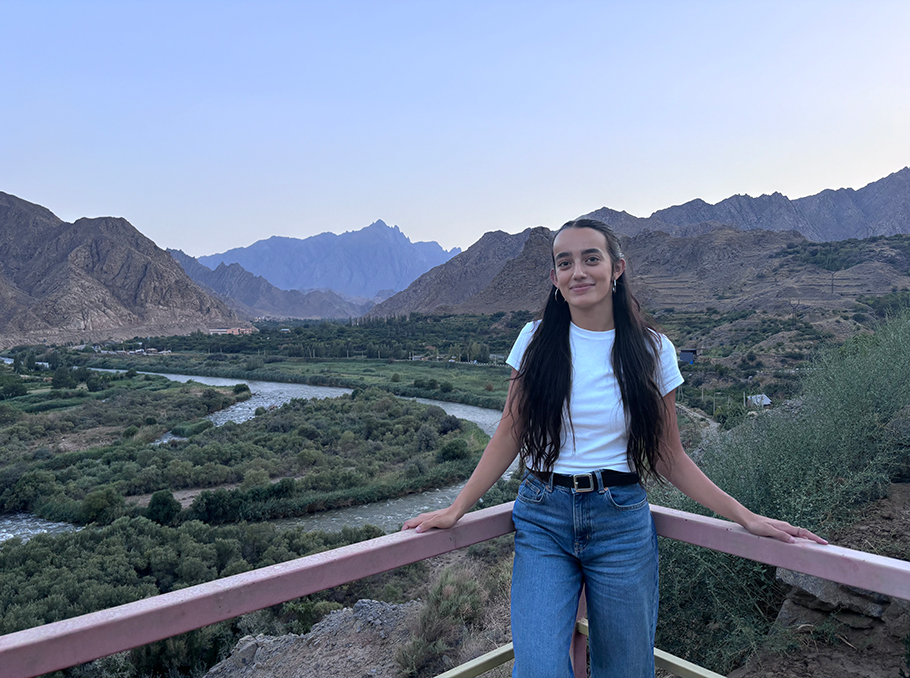







Comments
Dear visitors, You can place your opinion on the material using your Facebook account. Please, be polite and follow our simple rules: you are not allowed to make off - topic comments, place advertisements, use abusive and filthy language. The editorial staff reserves the right to moderate and delete comments in case of breach of the rules.